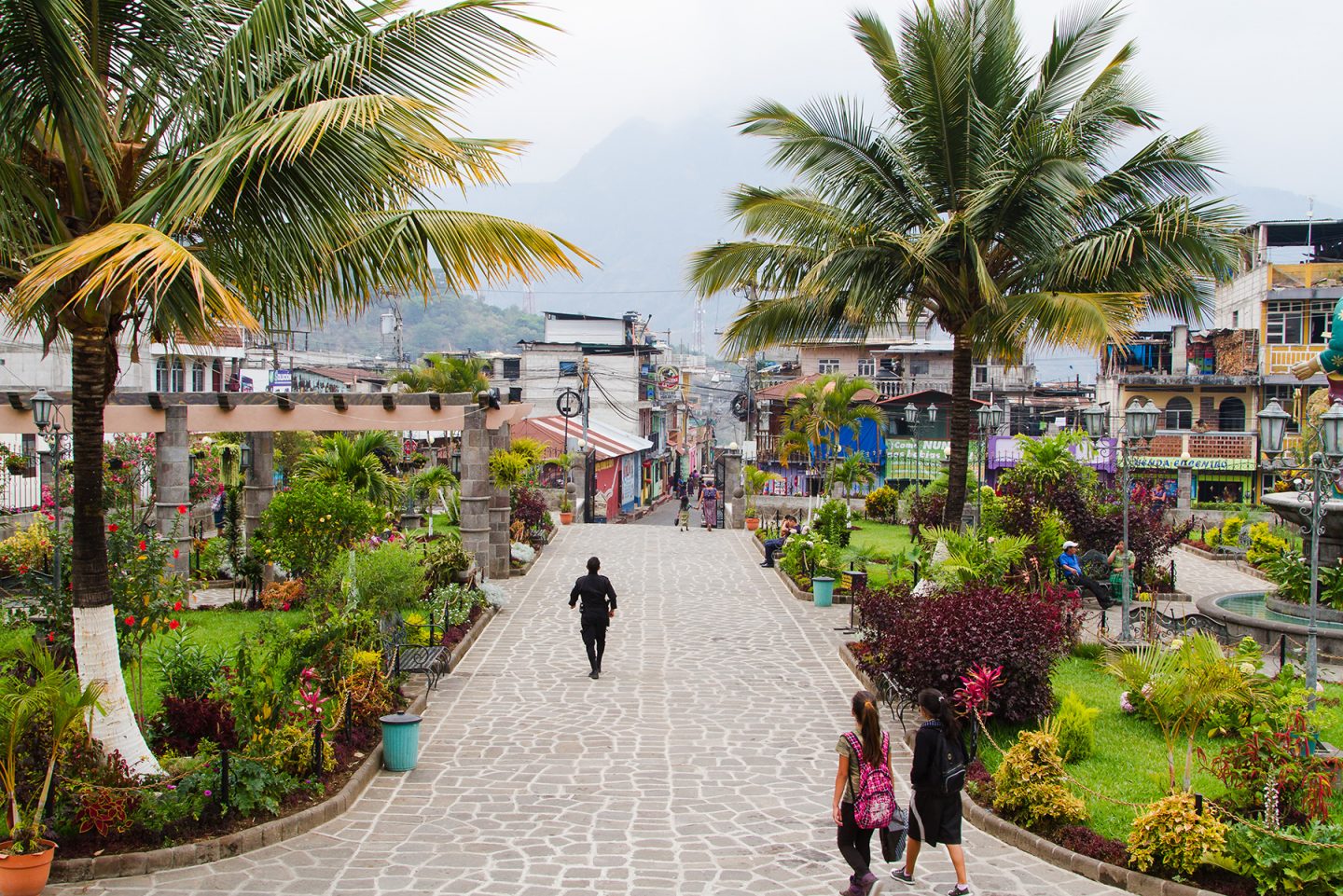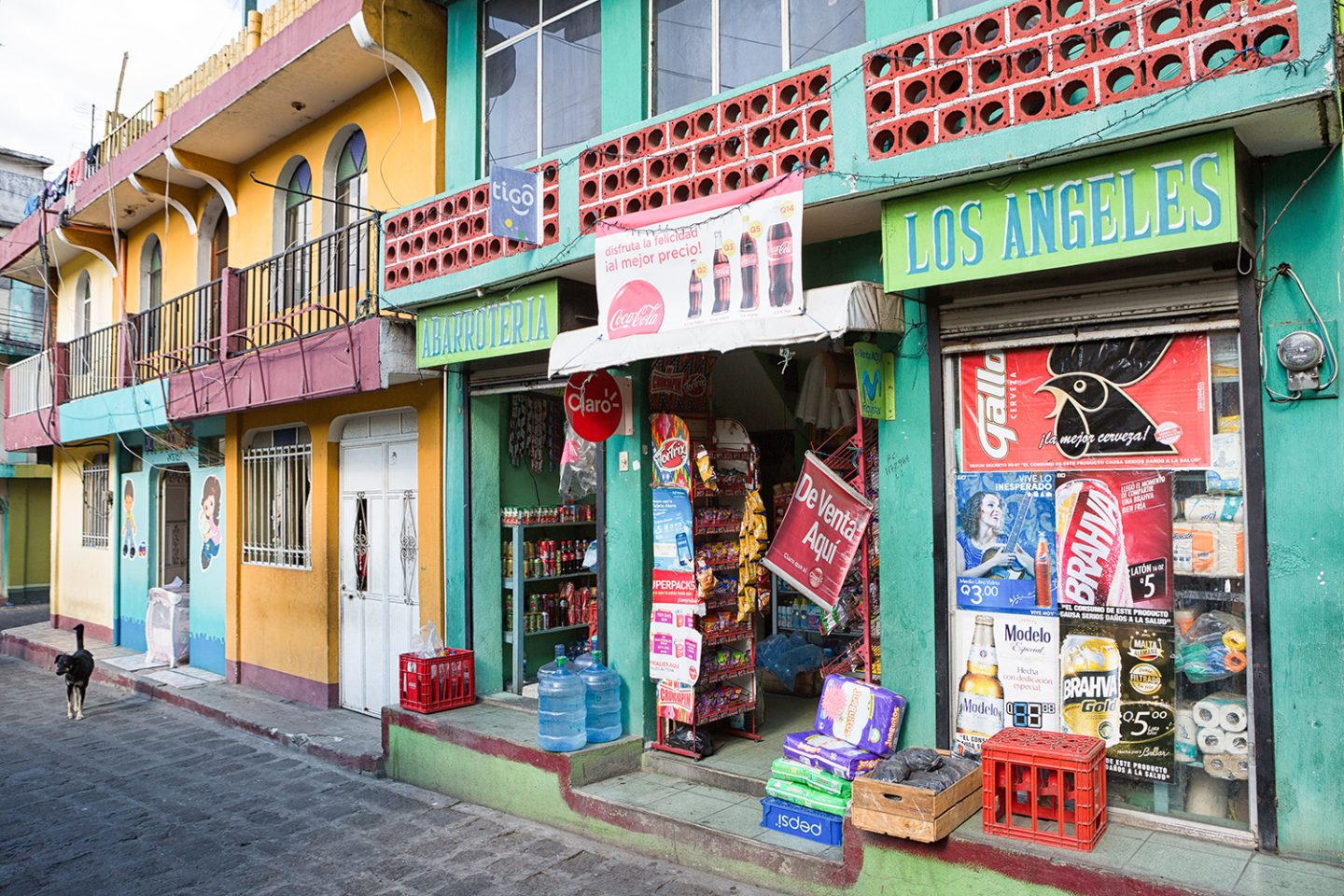Last night I dreamt of San Pedro

Guatemala’s San Pedro La Laguna is part festival, part cultural melting pot but the desperate poverty that grips this nation still sits close to the surface for the locals.
Cool and calm, Lake Atitlán rises between the volcanoes of the Guatemalan highlands, a wellspring of natural beauty and ancient energy. To get there, I take a ‘chicken bus’ (decommissioned school buses from the USA that are sent to Guatemala and repurposed for local transport), jiggling a little in the low plastic seat as the bus circles up and around through mist and trees.
I’m bound for San Pedro La Laguna, one of the lake towns most popular with tourists. It’s a charming, somewhat labyrinthine village that can feel a bit like one of those music festivals that are full of good vibes and dotted with pop-up food, jewellery and record stores.
The festival is permanent, though. San Pedro’s 13,000 inhabitants are joined every year by thousands of tourists, who come from near and far to kayak on the lake, sample the (delicious) coffee and chocolate, hike the volcanoes, learn local crafts and experience shamanic ritual and traditional medicine – as well as to relax and party. The vast majority of the town’s residents are indigenous Tzʼutujil people. They’re joined by a growing community of expats from North America and Europe.
While it can feel like a pocket of paradise, San Pedro very much reflects the struggles and successes of Guatemala as a country. At one stage of my journey from the Mexican border to the lake, I take a cab to get to Quetzaltenango, a town about 80km from San Pedro. As we wind through coffee fields and palm trees, spotting quetzales (the extraordinary colourful and sacred bird that is also the name of the country’s currency) the driver, Ernesto, tells me about the the six years he spent working as a gardener in Arizona. He married there and had a son. His family was torn apart when US immigration came knocking and sent him back to Guatemala because he did not have the legal documents of residency.
Guatemala’s endemic poverty, domination by the US and recent genocidal civil war means that stories like Ernesto’s are common. In San Pedro I meet one young man who was training to make the long journey to the US border, a journey that thousands of Central Americans take, mostly on foot, braving robbery, violence, hunger and thirst. Every morning 21-year-old Mateo runs up and down the hill closest to his home and tests his growing fitness by regularly walking between the towns that surround the lake. The threat of detention and deportation that is now very present at both the Mexico/Guatemala and the US/Mexico border does not deter him – the slimmest chance to make a decent living and save money for the future by working in the US is worth the risk. “I trust in God,” he says.

Indeed, God is also a big theme in San Pedro. Many formerly Catholic Guatemalans have converted to evangelical Christianity in recent years, a division that is also part of the recent history of the civil war (1960– 1996, which left more than 200,000 people dead and pitted neighbour against neighbour). San Pedro reflects this shift, with colourful murals portraying Bible verses beaming from many walls and the sounds of ecstatic musical worship drifting through the streets.
Holding all of this together is the creativity and resilience of the indigenous communities that own the land and the majority of businesses throughout the lake region. The soft, short tones of the Tzʼutujil language can be heard all around town. Women dressed in their richly coloured, embroidered traditional dress sell handicrafts and jewellery, run hostels and vacation rentals, and cook up beans and tortillas in the street.
Karen Jossette Venegas, of San Pedro’s indigenous-owned and indigenous-run business Benjy Travel, tells The Adelaide Review that “as indigenous workers, we want our communities to prosper”.
“Tourism can help realise this aspiration to the extent that it is a socially supportive, environmentally responsible, culturally enriching and economically viable activity.”
Sarah Cronin is a San Francisco Bay Area native now living in San Pedro. Like many of her fellow expats, after she first visited and spent time by the lake, she couldn’t stop thinking about it.
“I remember sitting in the airport back home scheming about how quickly I was going to get back” she tells The Adelaide Review.
Eight months later, Cronin was ready to leave home again. She didn’t hesitate to make the next destination San Pedro.
“I showed up with just a backpack, thinking I’d stay two months this time.”
Nearly a year later, she hasn’t left.
“Slowly it became apparent that this is where I’m supposed to be. I have no desire to go anywhere else.”